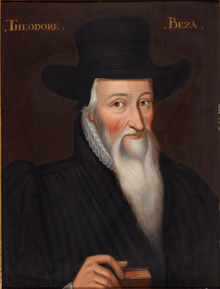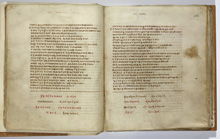Beza, Rheims and Douai
Théodore Beza, the pre-eminent Greek and Hebrew scholar of his day, oversaw the work of the team, including Miles Coverdale and John Knox, that produced the Geneva Bible in 1557-60. Beza produced several editions of the New Testament, but only his first (1556) made use of his newly-acquired Greek-Latin New Testament manuscript of the fifth century, the Codex Bezae. Beza rated it low, on account of its many variant readings and additions. In 1581 he presented it to Cambridge University for safe keeping, though in his accompanying letter he suggested that it might be ‘better hidden than published’. In the next year the Roman Catholic exiles at the English College in Rheims produced their own New Testament in English, based on the Latin text of St Jerome known as the Vulgate. In their translation they attempted to make the English as Latinate as possible, with the result that in places their work was unintelligible, even to contemporaries. The accompanying Old Testament was not published by the English College, by now at Douai, until 1609.


